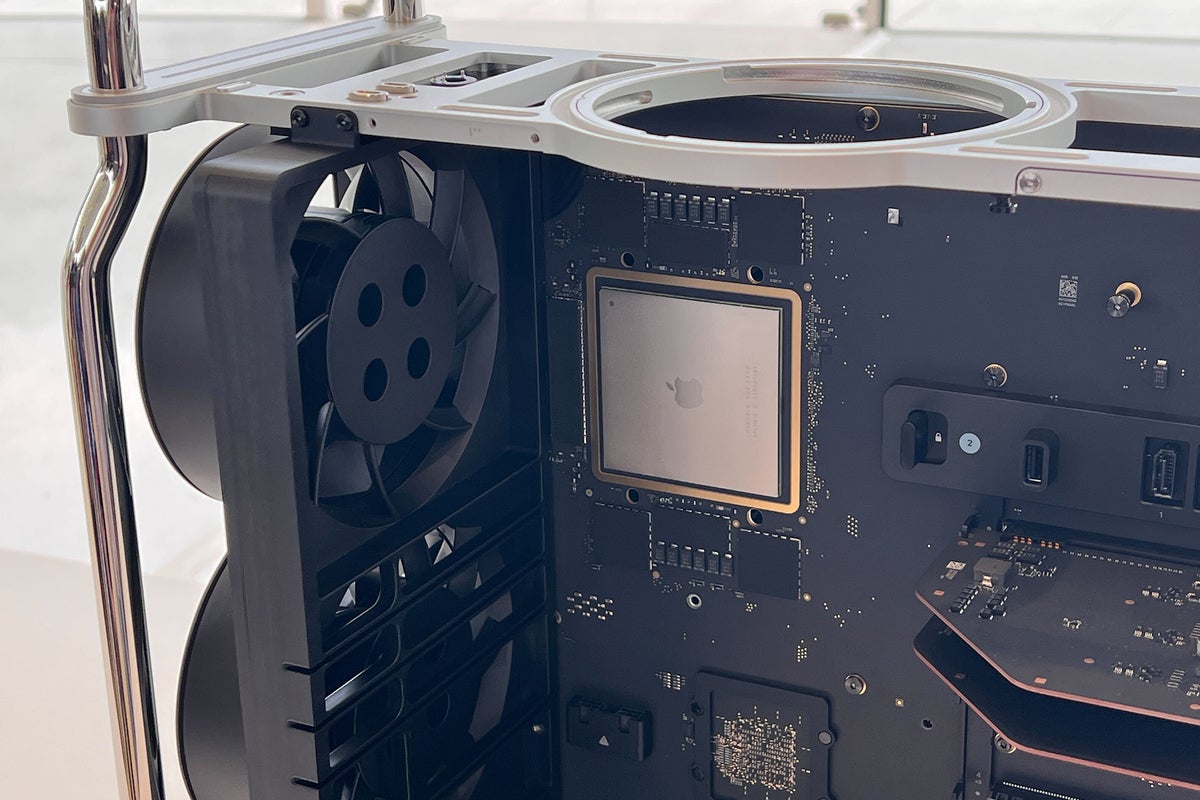Apple Silicon is still the real star of WWDC. The company’s Vision Pro headset may be grabbing most of the attention, but enterprise professionals will recognize that Apple’s chips have enabled the company to explore new forms of computing, including eyewear.
Apple’s Mac and processor news in brief
- First, Apple introduced the M2 Ultra processor. This 24-core 5nm chip boasts 20 billion more transistors than M1 Ultra. This makes it 20% faster, with a 30% faster GPU and a Neural Engine that’s 40% faster. The chip supports up to 192GB of memory at an industry-leading 800GB/s bandwidth, though only Mac Pro offers this.
- Second, Apple at last completed its Mac transition with the introduction of an Apple Silicon-powered Mac Pro. In the same familiar design, the new Mac Pro uses the M2 Ultra chip, which means the Mac is three times faster than the last Intel-based model. You also get six open PCIe expansion slots and support for up to 192GB unified memory. There are ample Thunderbolt ports, three USB-A ports, and two HDMI ports. The systems support up to six monitors. You even get a headphone jack. Prices start at $6,999.
- Third, and as anticipated, the company souped up the Mac Studio with a new M2 Ultra configuration the company promises to be “up to three times faster” than the M1 Ultra Mac Studio it replaces. In this design, memory maxes out at 96GB at 400GB/s, though you can still support up to six Apple monitors. Four Thunderbolt 4 ports, HDMI, USB-C and A, and an SD card slot all feature in these Macs, which start at $1,999.
- Finally, Apple also introduced a 15-inch (actually 15.3-inch) model of the MacBook Air. This uses an M2 chip, offers up to 18 hours of battery life, is fanless and silent to run, and delivers 500 nits of brightness on its Liquid Retina display. It weighs 3.3 pounds and is 11.5mm thick. The I/O consists of MagSafe, two Thunderbolt ports, the 1080p FaceTime camera, and a headphone jack. The company claims the machine is twice as fast as the best-selling Core i7 PC laptop. It starts at $1,299. Apple also shaved $100 from the price of the 13-inch MacBook Air with M2; these models now start at $1,099.
Apple Silicon: The fox in the PC chicken coop
“We view Apple Silicon is a key differentiator for Apple in the PC market and believe it can help accelerate PC market share gains,” wrote Morgan Stanley analyst Erik Woodring in a note to clients shared after the event.
The analyst, who correctly identified that Apple would not ship its new Vision Pro headset until December at the earliest, noted that Macs running these processors are picking up market share.
“Case in point — as of 1Q23, Apple has ~10% TTM PC unit share, but that is up 2.5 points in 9 quarters, from just ~7.5% share before Apple transitioned to Apple Silicon in 4Q20,” he explained.
In other words, the company continues to steadily build additional market share on the back of Apple Silicon.
It’s not terribly hard to figure out why.
People like Macs, recommend Macs, and want to use them at work as well as at home. It means that while Mac sales have declined in recent months, PC sales have declined more, meaning that Apple continues to build up market share in most geographies.
But Apple Silicon has proved a huge catalyst for further gains. We saw this across the pandemic, but the company’s evidenced progress in sticking to its road map for development of its chips has given many the reassurance they need to switch. The fact that the processors deliver superb performance at comparatively very low power requirements means pro users are finding it increasingly easy to justify the switch.
The star of the show
Decoding Apple’s announcements at WWDC, you can see the intentionality behind the company’s progress on its processor pilgrimage.
At the very highest end for the most demanding users, Apple now offers systems that absolutely devour similarly priced PCs, but the 15-inch MacBook Air shows the extent to which the company is also raising expectations for what computers should be able to do for consumers.
Vision Pro, meanwhile, articulates this message: now that Apple has these powerful processors, it isn’t afraid to use them to aggressively build completely new computing hardware concepts. As it does so, it generates additional heat for all the products in its fleet, raising status across all its platforms while increasing their appeal.
I don’t believe for one second that Vision Pro could exist without Apple Silicon, which is why Apple’s processors remain the stars of the developer show.
Please follow me on Mastodon, or join me in the AppleHolic’s bar & grill and Apple Discussions groups on MeWe.






